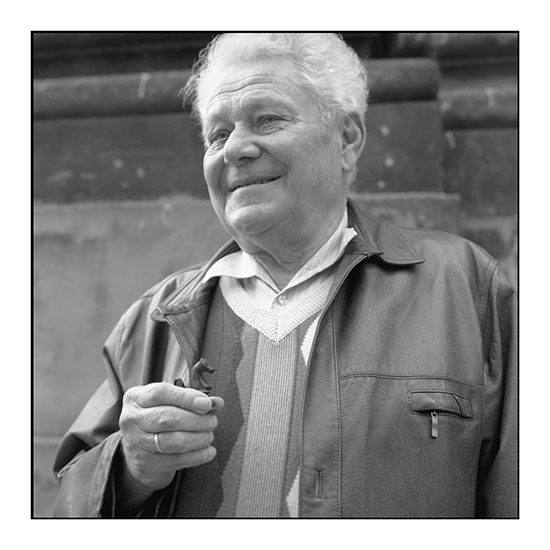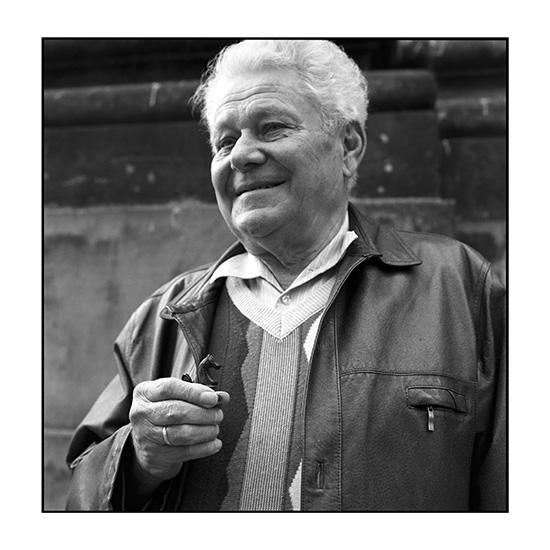
“I wrote a family chronicle for my children and grandchildren, with background about the past and what I experienced so that others don’t need to witness this again.”
-Rudolf Eichner, Dresden firebombing survivor
Rudolf Eichner is photographed holding a chess piece that was given to him by his father while he was staying at the hospital. His father regularly visited him to play chess. He was injured as a soldier and was sent to a hospital in Dresden, which was located in a school near the city centre.
Shortly before 10pm on February 13th, 1945, the first wave of bombers approached Dresden. The hospital was evacuated. The injured grabbed valuables and made their way to the cellar.
After the first wave of bombing the building remained intact but the houses on the opposite side of the street were in flames and the fire was spreading towards the hospital.
The hospital wasn’t as fortunate during the second wave of bombing, three hours later. The cellar was overcrowded with inhabitants of the burning buildings. The force of the explosions was more intense than during the first attack. Rudolf crawled with the other injured across the street and into a garden. Surrounded by growing flames, they formed a circle and fought back the flames for six hours. The men beat back the approaching flames with anything they could find.
When the flames succumbed to the men’s exhausting efforts, Rudolf asked the man next to him where his chess set was. The man said he had to use the board to beat the flames. It was lost in the inferno.
Every year on the anniversary of the bombings Rudolf returned to the spot where he had fought the inferno. Three years later, February 13th, 1948, he found a chess piece, a black knight, from the chess set destroyed by the flames.
Rudolf was one of the most active in getting a monument dedicated to the victims of the fire bombings. The small remembrance is located in the Altmarkt, the town square, where many of the dead were cremated in the days after the fire bombings.
